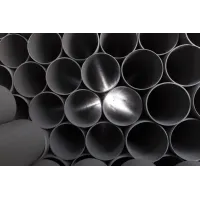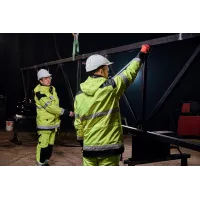How to save energy? The benefits of the insolasiyan
The importance of depletion of resources and energy savings
The world we live is changing rapidly. Natural resources that we have previously considered endless are more sensitive today. Energy comes at the beginning of the resources. As the production of electricity, gas and other energy sources rose, the savings for each host and workplace are becoming a decisive factor.

Today, real problems with heat loss
In winter, although your house is warmed by the inside of the windows, the walls, the walls and the roof, it faces you both concerned and additional costs. This is not just a matter of comfort - it is also an open indicator of energy ineffectiveness. The result? High payments, low productivity and more energy waste.
Basics of thermal insulation
How is the heat transferred?
The heat is transferred in three forms: Conductivity (Conductivity), Convection (Convection) and Radiation (Radiation). For example, when touching the cold wall, the heat you can go to the wall - it is permissible. The spread of heat with air flow in the house is the convex. The direct heat of sun rays is radiation.
How do heat insulation work?
Heat insulation slowdown or prevents this transmission. That is, the heat remains inside the house and the cold cannot enter. The ideal insulation works as a "heat shield" - both in summer and the flexibility in winter. It is carried out through the cover of walls, ceilings, floors and windows with special materials.
Most used insulation materials
Traditional and Innovative Approaches
Among the traditional insulation materials, the glass wool, stone wool and polystyrene (foam) is located. They are widespread and inexpensive. However, materials made with new technologies can be more effective. For example, such as polyurethane foam, cellulose-based insulation and even aerogel are already available in the market.

What kind of material do correspond to?
Cellulose based materials for light structures are an excellent choice. Waterproof stone wool is more suitable for humid places. To make the right choice, the environment should be taken into account the temperature, humidity level and the function. The heat conductivity of each material is different - it is the main indicator that determines their effectiveness.
Effective solutions applied in houses and offices
Great savings with simple steps
Sometimes it is possible to achieve serious results without the need for big changes. For example, the windows are replaced by double glass models or the closed of the surroundings of the doors play a major role in preventing heat loss. The door trays, insulation ribbons and thick curtains are such simple, but effective solutions.

Recommendations to increase energy efficiency
- Do not limit thermal insulation to walls - ceiling and floor are also important.
- Spend your central heating system regularly.
- Try to make the maximum use of sunlight.
- Adjust the room temperature using smart thermostats.
- Choose the buildings with power performance certificate or adjust your home to such standards.
Benefits and inspections of the future
Long-term economic gain
Although properly implemented thermal insulation requires investment at first glance, the result provides a serious decrease in monthly expenses. This also increases the total value of the building. In the long run, this step preserves both the family budget, but also creates a competitive advantage in the real estate market.
One step for the future of green and sustainable
Less energy consumption - means the issue of less greenhouse gas. This is a small but important step for our planet`s healthier future. Energy effectiveness and thermal insulation is important not only for individual flexibility, but also for collective environmental responsibility. The right steps taken today will make the green world tomorrow.


 Catalog
Catalog





